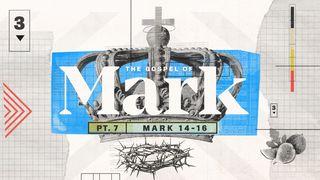NKJV 365 Day Reading PlanSample

Crucifixion
At the time of Jesus’ death, crucifixion was considered the most painful and degrading form of capital punishment in the Roman Empire. It was considered so horrible that it was used by the Romans only for slaves, those from the provinces under their control, and the lowest types of criminals. It was not to be used for a Roman citizen. This is in accord with the biblical account of Christ’s death and with church tradition, which asserts that Peter was also crucified, but Paul, a Roman citizen, was beheaded.
Crucifixion as a means of execution probably grew out of the practice of displaying the heads of captured enemies or criminals on a wooden stake like those used to build a wall or erect fortifications. Later, entire bodies were impaled. By Jesus’ time, crucifixion was a common sight.
Although methods of crucifixion seem to have varied throughout the Roman Empire, through biblical and historical accounts the basic pattern is known. The condemned person was first scourged with a flagellum, a whip of leather thongs with bits of metal or bone attached. This whipping greatly weakened the victim, who then had to carry the crossbeam to the place of execution. A sign specifying the crime was often placed around the criminal’s neck or on the cross. The person was stripped naked, laid on the ground with the crossbeam under his shoulders, and tied or nailed to it. Nailing made the victim die quicker, as it did Jesus, whom the Jewish officials wanted dead before the Sabbath. The crossbeam was lifted and secured to a post so that the person’s feet were hanging just off the ground. Some archaeologists think a pin or wooden block was placed halfway up the post to provide a seat for the body so that the nails would not tear open the wounds, causing the body to fall. The feet also could be nailed or tied to the post.
Although the pain was excruciating, some victims survived on the cross for days. As in the case of the two criminals crucified with Jesus, the legs of a crucified person were sometimes broken to make the sufferer die. This caused massive shock, followed by loss of circulation and heart failure.
Although completely innocent of all sin, Jesus suffered the most horrible, disgraceful punishment known. But His agonizing death was not an ordinary death, for it was not the final chapter. Jesus turned this apparent defeat into the most glorious victory the world has ever known. At the Cross, He suffered for the sins of the world. Then after His resurrection from the dead three days later, Jesus empowered His disciples with a new message, the Good News that He had finally defeated the power of sin and death. Through the Cross, Jesus offers salvation to all who will believe in Him.
Taken from NKJV Study Bible
Scripture
About this Plan

This year-long reading plan will help readers learn about the stories and the people of the Bible as they delve into the meaning of God's Word. It features 365 readings from a variety of NKJV Bibles, which will provide Christians with insight and information that will help them grow stronger in their faith.
More
We would like to thank Thomas Nelson for providing this plan. For more information, please visit: http://bibl.es/YV-NKJV365
Related Plans

The Jesus Bible Reading Plan

Precious Moments That Count For Eternity

ICA - 365 Daily Kingdom Living

365 Ways To Know God

The Gospel of Mark (Part Seven)

Read the Book: July - September

God Is With You Every Day

In the Word

The Mission | the Unfolding Story of God's Redemptive Purpose (Family Devotional)
